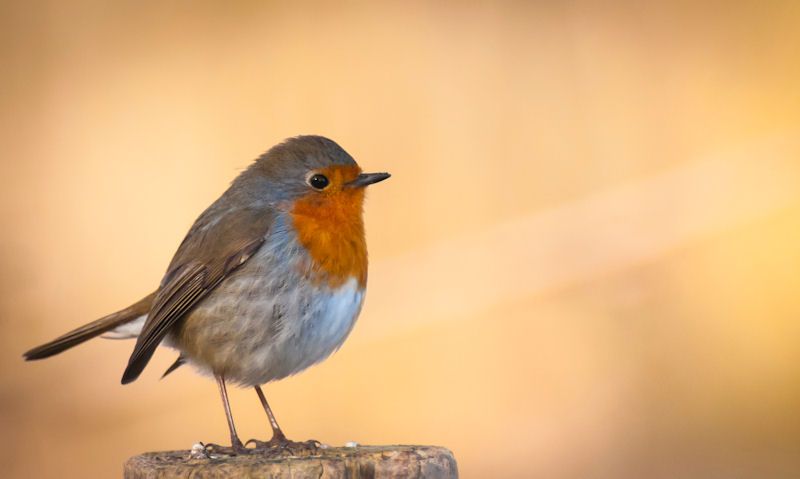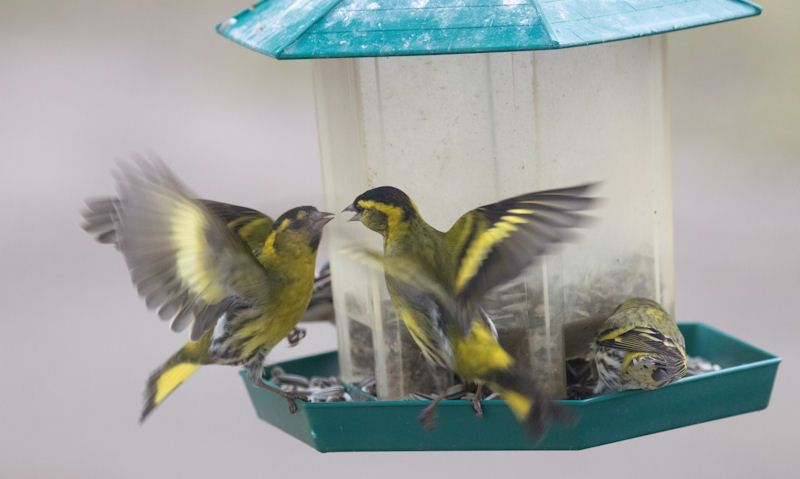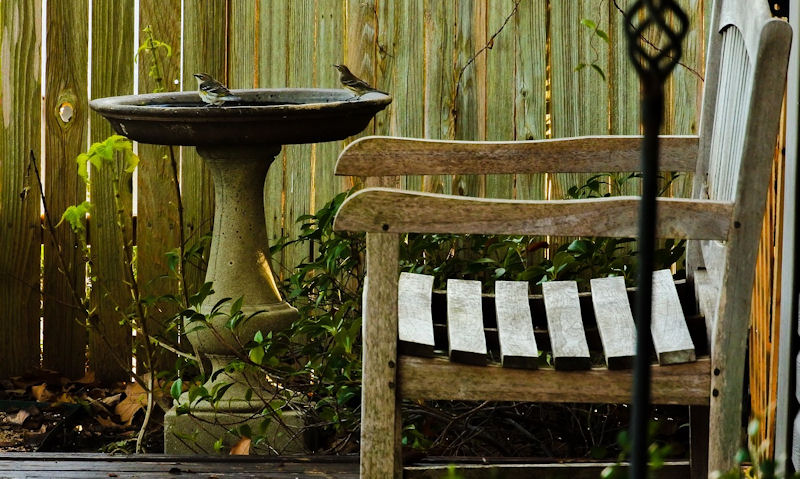Do Robins use bird boxes
Robins do use bird boxes while being more than willing to nest in your setup, but do know that it can be a rare occasion to see this occur in your garden.
Robins will use bird houses providing its designed in a special way; it should feature an open front but be more shallow. No bird box hole size needed as its simply a wide open gap to access the box. Location is a difficult one at its sited at 2 metres off the ground, while buried back in ivy or a blooming hedgerow.
Now that you know Robins do use bird boxes, its time to get to work picking out a practical Robin bird box to buy that is sure to compliment its surroundings.
It could be a classic wooden box, made in brushwood, ceramic or made in a natural log, either way its going to need a large open gap for an entrance hole.
To buy a wild bird box intended for Robins is easy enough, only the challenge begins when you set it up in the garden - and it must be very specific.
Site the box low to the ground, preferably up to 2 metres, or 6 feet; as it should be located in a ivy, hedgerow or creeper of some kind - it can be hard to find growth of this kind that grows up so high off the ground.
Once the spot as been found, Robins only ask for a clear line of sight to come and go.
Robins BIG users of bird boxes
Of all the wild birds who use bird boxes in the UK, Robins are one of the biggest due to their pairing numbers in the UK.
While favouring an open front bird box that replicates their nest built in nature, to site a bird box in the correct location can bring nesting Robins successfully.
While big users of bird boxes, it can be limited when compared to the average British garden bird - due to the lack of dense foliage needed.
To site a Robin bird box out in nature, farmland or near wooded areas would see more success - but it is made harder in the garden.
Setting up a bird box for Robins would require overgrown ivy or creepers.
But more importantly than that is making sure the box is facing north, north east as any type of bird box should be facing away from direct sunlight and westerly winds.
Unique bird box design
Unlike a classic wooden bird box for use by small garden birds, Robin bird boxes do not use the standard bird box hole size.
Instead the Robin box requires a large opening which is why you'd once in a while see a Wren steel its house - as they share identical box styles.
What size the Robin bird box is would be quite standard too, but its more square shape with a shallow depth.
Open front design that uses a short panel of wood, or whatever the bird box happens to be made out of - where the Robins are safely nesting behind.
Robins will not make do with a plain, empty bird box offered up by you; instead they will make it their own - same as all bird box birds - by creating a nest inside the box.
Unfortunately, it can be quite excessive so rather than an open front where you can observe a family of Robins, nest material protrudes out of the box in a not so pleasant way.
Specific bird box location
Once you've found the specific Robin bird box you intend to situate in your garden, siting the Robin bird box can be a real challenge.
Remarkably, Robin bird boxes can be fixed not that high off the ground, so in terms of usability - you couldn't find a better wild bird to attract to nest.
Ideally, you would want an overgrown quiet spot in the garden with ivy growing up in an isolated area.
If not, use of a wooden creeper in full bloom can be just as effective.
But what could be better than a reliable all year round hedgerow, where you can bury the Robin bird box deep into its leafy overgrowth.
Wherever you decide to site the bird box, do allow a clear flight path as you don't want to risk trapping Robins and their young if in need to escape from predators.
Identical nesting habit
Now that we've established Robins do use bird boxes, then you'd want to know when is a good time to put it up right.
Well, to be honest there's never a bad time to put up a bird box, as it can be used all year round - and not just for the nesting season.
Nesting season in the UK is officially February through August, so get the bird box up in January to attract any possible takers early on.
That is not to say your Robins won't nest earlier or indeed a bit later in the year.
Robins can roost too, so a wooden bird box can be used to roost a number of birds - other than Robins - so if the nesting season is lost, you haven't missed a great opportunity.
Do Robins use boxes summary
Robins are one of the biggest bird box users in the UK, out of a possible twenty-two wild bird species who are happy to nest in bird boxes, crafted by hand.
Unlike their other feathered friends in the wild, Robins prefer a unique bird box design that is unlike one you may of come to be the standard type.
It must be Open Fronted with a 100mm to 150mm tall gap on the front, along with a width in an identical or near ratio.
Quite boxy, but Robin bird boxes can be made very differently; using many types of materials so not just wood - while the hole size could vary but so can the overall design.
To bring Robins into your garden to nest can be quite difficult, in that they require a lower positioned bird box that is buried in ivy or creepers, if that is available to you.
Robins nest in February to August, but can start their nesting season early or later on.


